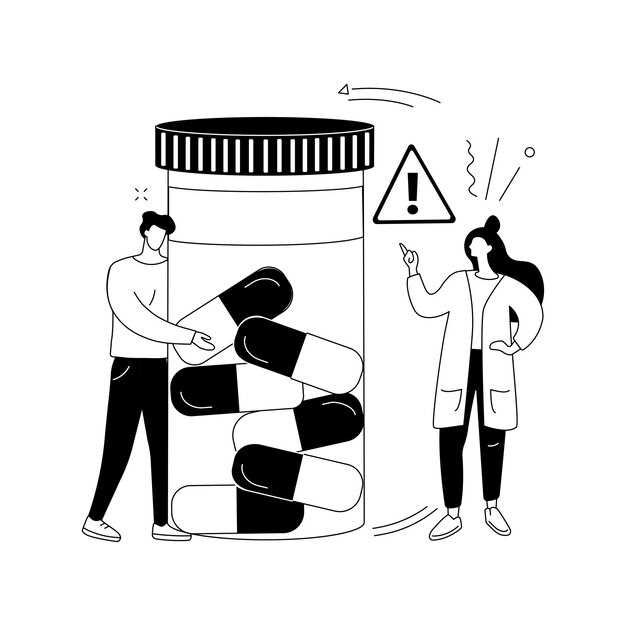
Losartan is a commonly prescribed medication for treating high blood pressure and reducing the risk of stroke in certain patients. It belongs to a class of drugs called angiotensin II receptor blockers (ARBs).
It is important to follow your healthcare provider’s instructions carefully when taking losartan. The safe dose range for losartan typically ranges from 25 mg to 100 mg once daily.
It is crucial to consult with your doctor to determine the appropriate dosage of losartan for your specific condition and medical history. Do not exceed the recommended dose without medical supervision.
Description of Losartan
Losartan is a medication commonly prescribed to treat high blood pressure (hypertension) and to reduce the risk of stroke in patients with hypertension and left ventricular hypertrophy. It belongs to a class of drugs known as angiotensin II receptor blockers (ARBs), which work by blocking the action of angiotensin II, a substance in the body that tightens blood vessels and increases blood pressure. By blocking the effects of angiotensin II, losartan helps to relax blood vessels and lower blood pressure, making it easier for the heart to pump blood efficiently.
Losartan is available in tablet form and is usually taken orally once daily. The dosage prescribed will depend on the patient’s condition and response to treatment. It is important to follow the dosage instructions provided by your healthcare provider and not to exceed the recommended dose.
Losartan may cause side effects such as dizziness, lightheadedness, and fatigue. It is essential to notify your healthcare provider if you experience any unusual symptoms while taking losartan.
Description of Losartan
Losartan is an angiotensin II receptor antagonist that is commonly used to treat high blood pressure (hypertension) and to reduce the risk of stroke in patients with heart disease. It works by blocking the action of angiotensin II, a hormone that causes blood vessels to constrict and raises blood pressure.
Losartan helps to lower blood pressure by dilating blood vessels, which allows blood to flow more smoothly and reduces the strain on the heart. It is often prescribed as a first-line treatment for hypertension and is effective in both reducing blood pressure and protecting the heart from damage due to high blood pressure.
Losartan is usually taken once a day and can be taken with or without food. It is important to follow your healthcare provider’s instructions for taking losartan and to report any side effects or concerns to them promptly.
Possible Side Effects

It is important to be aware of the potential side effects of losartan. While not everyone will experience these side effects, it is still important to be informed. Common side effects may include:
- Dizziness
- Fatigue
- Cough
- Hyperkalemia
- Low blood pressure
If you experience any severe side effects or allergic reactions such as difficulty breathing, swelling of the face, lips, throat, or tongue, seek immediate medical attention. Additionally, it is recommended to consult with a healthcare professional if you have any concerns or questions about the side effects of losartan.
Possible Side Effects
While losartan is generally well-tolerated, some individuals may experience side effects. Common side effects include dizziness, fatigue, and headache. These symptoms are usually mild and transient.
Serious side effects may include:

1. Hypotension: Losartan may cause a sudden drop in blood pressure, especially when standing up from a sitting or lying position. This can lead to dizziness, fainting, or blurred vision. It is important to monitor blood pressure regularly while taking losartan.
2. Hyperkalemia: Losartan can increase potassium levels in the blood, which can lead to serious heart rhythm abnormalities. Symptoms of hyperkalemia include muscle weakness, palpitations, and tingling sensations. Blood tests may be necessary to monitor potassium levels.
3. Allergic reactions: Some individuals may be allergic to losartan, resulting in skin rash, itching, swelling of the face or throat, or difficulty breathing. Seek immediate medical attention if you experience any of these symptoms.
Please consult your healthcare provider if you experience any unusual or persistent side effects while taking losartan.
Interactions with Other Drugs
Losartan may interact with other drugs, including but not limited to:
1. NSAIDs: Nonsteroidal anti-inflammatory drugs (NSAIDs) like ibuprofen or aspirin may reduce the effectiveness of losartan.
2. Diuretics: Combining losartan with diuretics may result in low blood pressure.
3. Potassium Supplements: Taking potassium supplements along with losartan may increase the risk of hyperkalemia.
Medical Supervision and Monitoring
To ensure the safe and effective use of Losartan, medical supervision and monitoring are essential. Patients should follow the prescribed dosage regimen diligently and report any unusual symptoms to their healthcare provider immediately. Regular blood pressure checks and kidney function tests may be necessary to monitor the response to Losartan therapy.
| Recommended Actions | Frequency |
|---|---|
| Monitor Blood Pressure | Every 2-4 weeks initially, then as needed |
| Check Kidney Function | At baseline and periodically thereafter |
| Assess Electrolyte Levels | Periodically |
In case of any persistent adverse effects or signs of drug interaction, prompt medical intervention is crucial. Patients should not adjust their Losartan dose without consulting a healthcare professional. Additionally, pregnant women or those planning to become pregnant should seek medical advice before using Losartan, as it may pose risks to the fetus.
